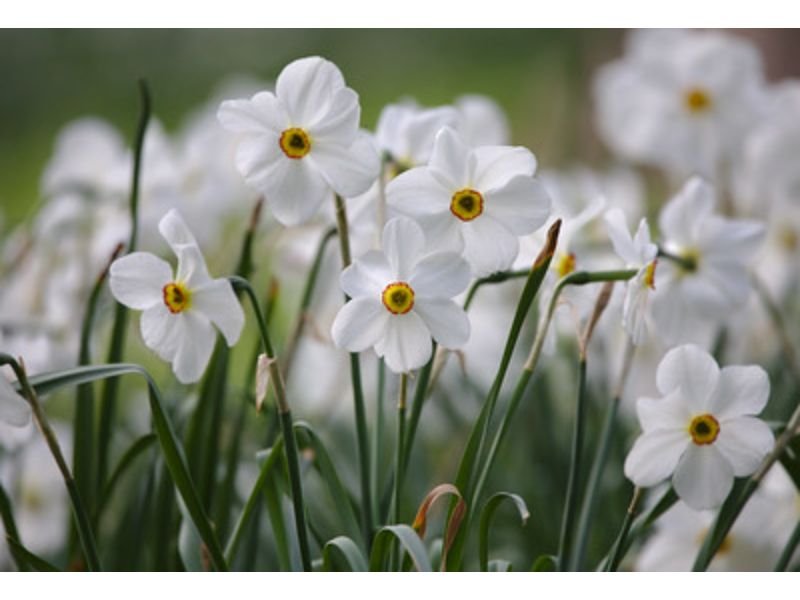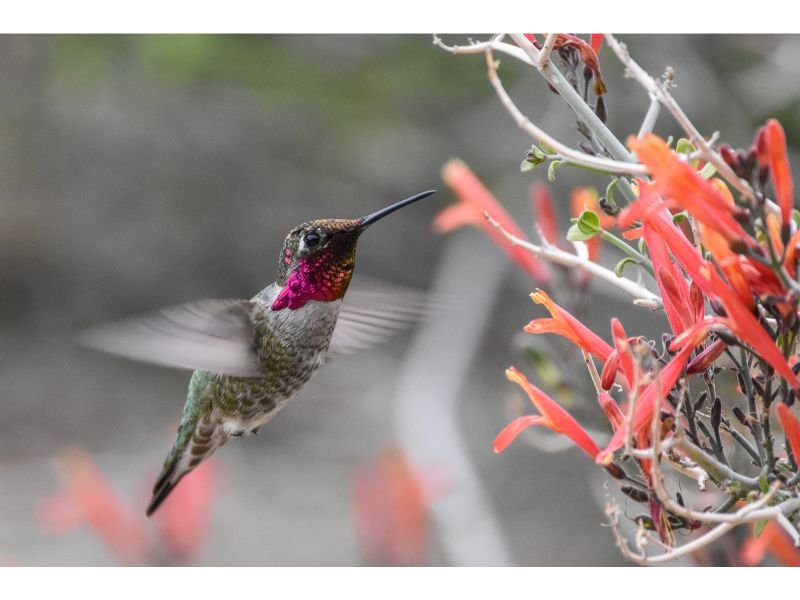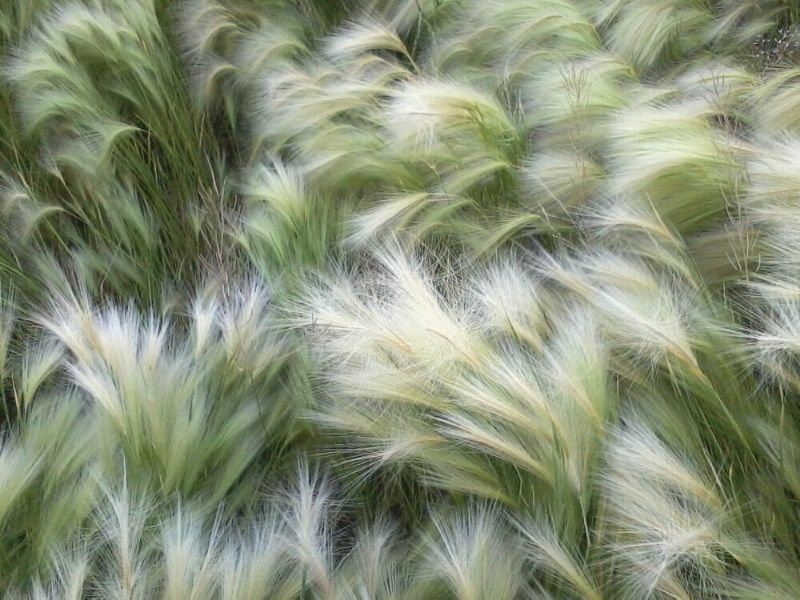Last updated on October 5th, 2023 at 05:07 am
Are you searching for a unique and eye-catching flower to add to your garden or bouquet? Look no further than the world of blue spiky flowers! From the delicate petals of the Eryngium to the sharp, spiked leaves of the Ageratum, there are plenty of stunning options to choose from.
Some Blue spiky flowers are Leavenworth’s Eryngo, Syrian Thistle, Boar Thistle, Grecian Thistle, Delphinium, Salvia, Eryngium, Centaurea, Penstemon, Scabiosa, Ageratum.
Not only do these flowers add a pop of color and texture to any arrangement, but they also have rich histories and symbolism. In this article, we will introduce you to a variety of blue spiky flowers and provide tips on how to care for them in your own garden.
Table of Contents
Blue flowers with spiky attributes
Leavenworth’s Eryngo

Leavenworth’s Eryngo, a striking and captivating botanical wonder, boasts a distinctive appearance with its cobalt-blue petals arranged in a captivating spiky cluster. This perennial herb, native to North America, stands out in its natural habitat with its slender stems and spiny, azure blossoms that seem to defy convention.
Its unique structure, resembling a miniature explosion of blue fireworks, adds a touch of intrigue to the landscape. Not only does this remarkable plant draw the eye with its vivid color and spiky allure, but it also serves as a vital resource for pollinators, attracting bees and butterflies with its nectar-rich blooms. Leavenworth’s Eryngo is a true gem of the wild, enchanting all who encounter its extraordinary beauty.
Syrian Thistle Notobasis syriaca
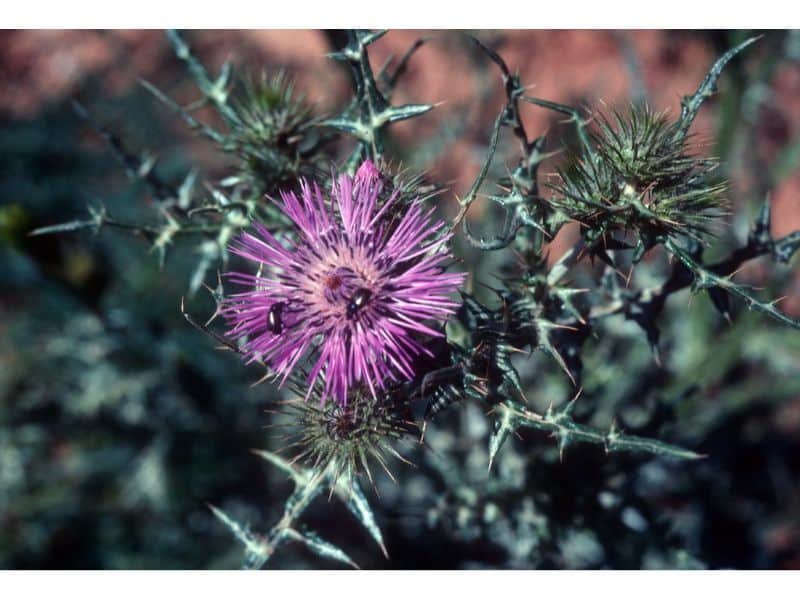
The Syrian Thistle, scientifically known as Notobasis syriaca, is a remarkable and resilient plant that thrives in arid and semi-arid regions of the Middle East and Mediterranean.
This herbaceous perennial exhibits a unique blend of characteristics, featuring a tall, upright stem adorned with spiky, silvery-green leaves and crowned by striking violet-pink to lavender flower heads. Its robust and thorny appearance serves as a testament to its ability to endure harsh environmental conditions, making it a symbol of tenacity in the plant kingdom.
The Syrian Thistle’s vibrant blooms attract pollinators like bees and butterflies, contributing to the biodiversity of its habitat. Despite its thorny exterior, this thistle holds a quiet beauty, representing the resilience and adaptability of nature in challenging landscapes.
Boar Thistle Galactites tomentosus
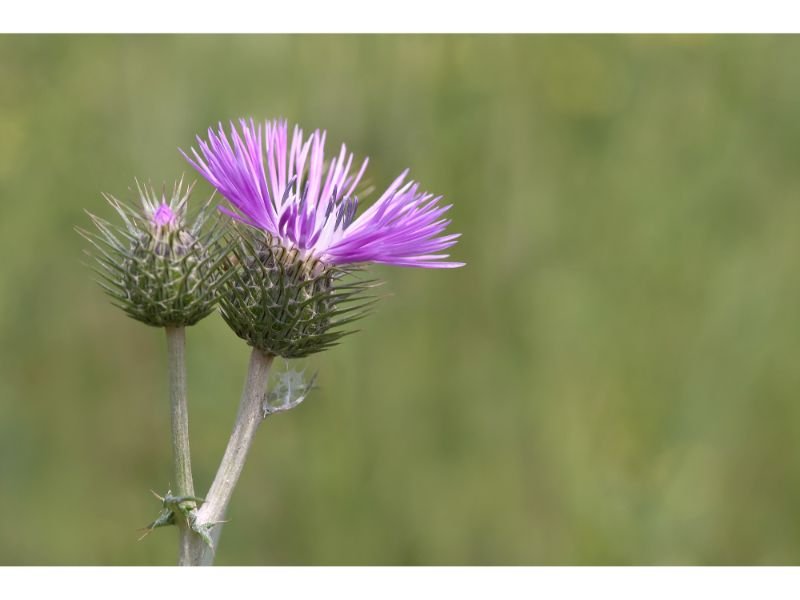
The Boar Thistle, scientifically known as Galactites tomentosus, is a captivating wildflower found in various regions of Europe and the Mediterranean. This biennial or perennial plant boasts a distinctive appearance, with its deeply lobed, spiny leaves forming a basal rosette and tall, upright stems that bear intricate, spherical flower heads. These flower heads are adorned with striking magenta or lavender-pink petals, making them a delightful sight in natural meadows and grasslands.
Boar Thistle’s name is derived from its rough, bristle-like leaves, reminiscent of a boar’s bristles, and its spiky character adds to its unique charm. Despite its somewhat intimidating appearance, this thistle is a valuable resource for pollinators like bees and butterflies, as well as for other wildlife, which feed on its seeds. The Boar Thistle serves as a testament to the resilience and beauty of wildflowers, flourishing in diverse ecosystems and contributing to the natural tapestry of its habitat.
Grecian Thistle Ptilostemon afer

The Grecian Thistle, scientifically known as Ptilostemon afer, is a captivating perennial plant native to the Mediterranean region. It is characterized by its distinctive and intricate appearance, featuring deeply divided, silver-green leaves and tall, slender stems adorned with eye-catching flower heads. These flower heads consist of numerous tiny, tubular florets in various shades of purple or violet, creating a stunning visual display.
The Grecian Thistle’s name reflects its geographic origin and its thistle-like appearance, with spiky bracts surrounding its blossoms. Despite its spiky exterior, this thistle is a source of nectar and pollen for various pollinators like bees and butterflies, contributing to the biodiversity of its habitat. Its ability to thrive in rocky and arid landscapes serves as a testament to its adaptability and resilience. The Grecian Thistle is not only a botanical treasure but also a symbol of nature’s ability to flourish in challenging environments.
Delphinium
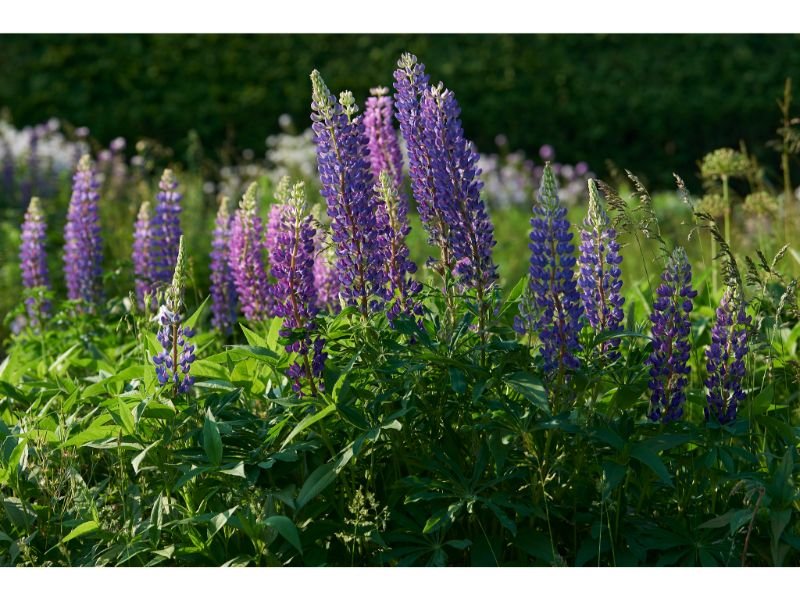
Delphinium, also known as larkspur, is a tall, stately flower that is known for its beautiful spikes of blue, purple, or white blooms. Each flower is made up of delicate petals arranged in a circular pattern around a central, spiky column. The leaves of the Delphinium plant are also spiky, with jagged edges and a deep green color.
These flowers are native to the Northern Hemisphere and are often used in cottage gardens or as cut flowers in bouquets. The blue spiky flowers of the Delphinium plant add a touch of elegance and grace to any garden or arrangement.
Eryngium
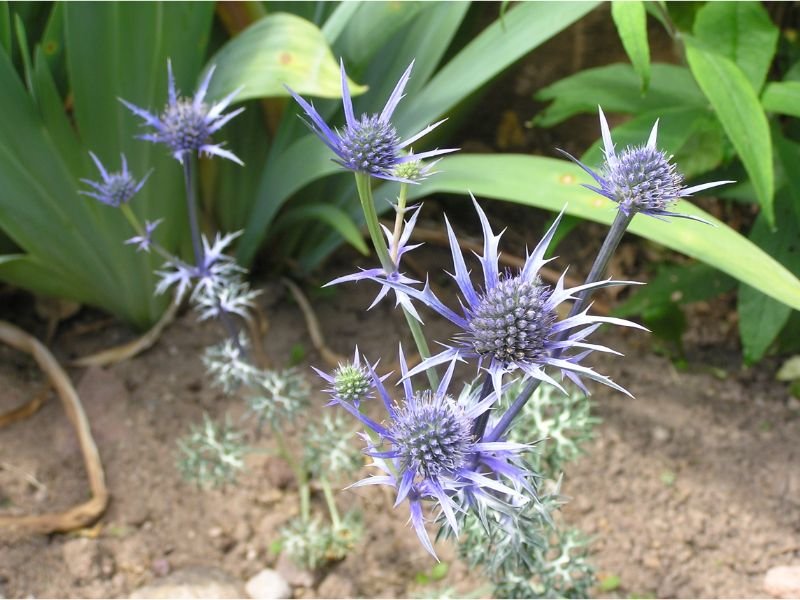
Eryngium, also known as sea holly, is a unique and striking flower that is known for its spiky, silver-blue leaves and small, thistle-like blooms. The leaves of the Eryngium plant are narrow and pointed, with jagged edges that give them a spiky appearance. The flowers are small and have a tubular shape, with petals that are arranged in a circular pattern around a central, spiky cone.
Eryngium plants are native to Europe and North America and are often used in dried flower arrangements or as cut flowers in bouquets. The blue spiky flowers of the Eryngium plant add a touch of whimsy and charm to any garden or arrangement.
Centaurea
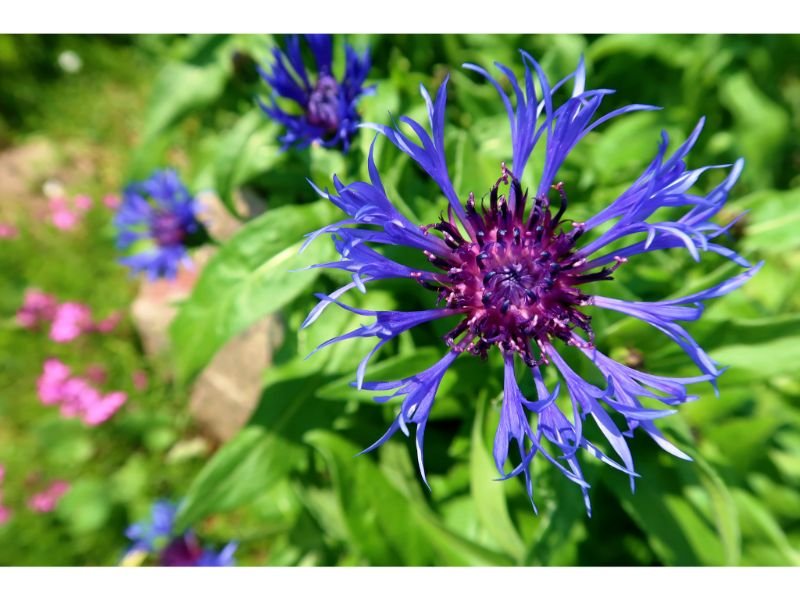
Centaurea, also known as cornflowers or bachelor’s buttons, is a beautiful and versatile flower that is known for its spiky blue or purple petals and soft, fluffy center. Each flower is made up of delicate, ray-like petals that are arranged in a circular pattern around a central, spiky disk. The leaves of the Centaurea plant are narrow and pointed, with a soft, fuzzy texture.
These flowers are native to Europe and Asia and are often used in cottage gardens, wildflower meadows, or as cut flowers in bouquets. The blue spiky flowers of the Centaurea plant add a touch of whimsy and charm to any garden or arrangement.
Salvia
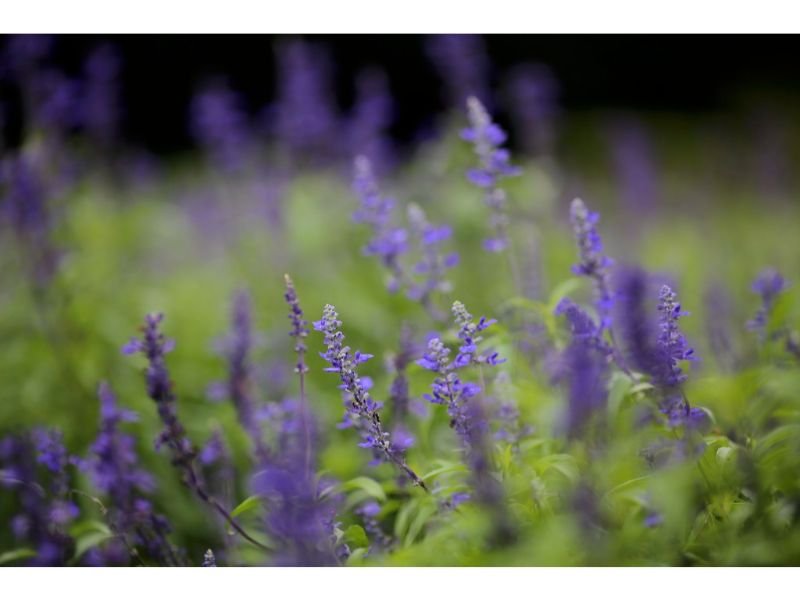
Salvia is a large and diverse family of flowering plants that includes many species with blue or violet flowers that are arranged in spikes or whorls. The leaves of Salvia plants are often long, narrow, and pointed, with a glossy texture. The flowers are typically tubular or bell-shaped and have a spiky appearance, with petals that are arranged in a circular pattern around a central, spiky cone.
Salvia plants are native to many regions around the world and are often used in cottage gardens, wildflower meadows, or as cut flowers in bouquets. The blue spiky flowers of Salvia add a touch of elegance and grace to any garden or arrangement.
Penstemon

Penstemon is a flowering plant that is known for its spiky, tubular blooms in shades of blue, purple, and pink. Each flower is made up of delicate, tube-like petals that are arranged in a circular pattern around a central, spiky cone. The leaves of the Penstemon plant are narrow and pointed, with a glossy texture.
These flowers are native to the Americas and are often used in cottage gardens, wildflower meadows, or as cut flowers in bouquets. The blue spiky flowers of Penstemon add a touch of whimsy and charm to any garden or arrangement. They are also popular with hummingbirds and other pollinators.
Scabiosa

Scabiosa, also known as pincushion flowers, is a beautiful and distinctive flower that is known for its spiky, dome-shaped centers surrounded by petals in shades of blue, purple, and white. Each flower is made up of delicate, petal-like sepals that are arranged in a circular pattern around a central, spiky dome. The leaves of the Scabiosa plant are narrow and pointed, with a soft, fuzzy texture.
These flowers are native to Europe, Asia, and Africa and are often used in cottage gardens, wildflower meadows, or as cut flowers in bouquets. In my opinion, the blue spiky flowers of Scabiosa add a touch of whimsy and charm to any garden or arrangement. Their unusual shape and delicate beauty make them stand out in any setting.
Ageratum

Ageratum is a flowering plant that is known for its bright blue, spiky petals, and fluffy center. Each flower is made up of delicate, petal-like sepals that are arranged in a circular pattern around a central, spiky cone. The leaves of the Ageratum plant are narrow and pointed, with a soft, fuzzy texture. These flowers are native to Central and South America and are often used in cottage gardens, wildflower meadows, or as cut flowers in bouquets.
Conclusion
Blue spiky flowers are a unique and eye-catching addition to any garden or bouquet. From the tall, stately Delphinium to the delicate and whimsical Scabiosa, there are many beautiful options to choose from. Each of these flowers has its own distinct characteristics and symbolism, making them a perfect choice for a variety of occasions and settings.
Whether you are looking to add a touch of elegance and grace with the Delphinium or a pop of color and whimsy with the Ageratum, blue spiky flowers are sure to make a statement. Whether you are an experienced gardener or a beginner, these flowers are easy to care for and will thrive in most gardens with proper attention. So why not try adding a few blue spiky flowers to your garden and see the magic they bring.

Gardening is my passion and growing plants indoors has always been a stress relief for me. Grow a banana tree in my apartment once (although failed to produce bananas).

